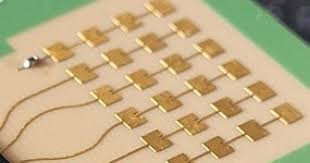Development and experimental evaluation of radar system in the 5-6 GHz frequency band

Introduction:
Radar systems are critical in a wide array of applications, ranging from automotive safety and surveillance to communication and navigation systems. Traditional radar systems often rely on complex, bulky, and expensive components. This research proposes the development of a radar system built using printed circuit technology, offering a compact and cost-effective alternative without compromising performance. By focusing on the design, development, and experimental validation of the system, this work aims to bridge the gap between traditional radar systems and more modern, integrated solutions.
Description:
The proposed research aims to design and develop a fully integrated radar system utilizing printed circuit technology, with experimental characterization in both laboratory and real-world environments. The radar system will consist of a transmission and reception module, an RF electronic subsystem, and a baseband subsystem for signal encoding, decoding, and digital signal processing. A thorough experimental validation will be conducted, first in an anechoic chamber and subsequently in a real-world operational setting. The research is expected to contribute to advancements in radar technology, offering improved system integration, reduced cost, and enhanced performance in terms of signal processing and environmental adaptability.
Objectives and Methodology:
The primary objectives of the proposed research include:
1. Design and Development: To design a complete radar system using printed circuit technology, including transmission, reception, and RF subsystems.
2. Signal Processing: To implement a baseband subsystem capable of encoding, decoding, and digitally processing radar signals in real time.
3. Experimental Characterization: To perform extensive experimental validation of the radar system in a controlled laboratory environment (anechoic chamber) and under realistic operational conditions.
4. Optimization: To optimize system performance for a variety of applications, ensuring adaptability to different environmental conditions and operational requirements.
Expected Outcomes:
By the end of the thesis, it is expected that the student will have contributed to several important areas within radar technology:
1. System Design: The radar system will be designed using printed circuit technology, incorporating a transmission and reception module (antenna or antenna array) and an RF electronic subsystem.
2. Subsystem Integration: A baseband subsystem will be developed for signal generation, encoding, and decoding, in conjunction with digital signal processing algorithms.
3. Prototyping and Fabrication: The radar system will be prototyped and fabricated, with a focus on ensuring minimal power consumption, compact design, and robust performance.
4. Experimental Validation: The system will be experimentally characterized in two stages:
o Laboratory Testing: In a controlled environment, such as an anechoic chamber, to assess the radar’s performance under ideal conditions.
o Field Testing: In real-world operational environments to evaluate the system’s adaptability and robustness in practical use cases.
5. Data Analysis: Signal data from both testing environments will be analyzed to refine system design and improve performance metrics such as range, resolution, and signal-to-noise ratio.
Conclusion:
The proposed research aims to develop a fully integrated radar system using printed circuit technology, with experimental characterization to ensure its performance in both laboratory and real-world environments. The system’s validation through laboratory testing and real-world implementation will provide valuable insights into its applicability for various operational scenarios. Ultimately, this research is expected to offer a cost-effective, adaptable, and high-performance radar system that could be utilized across a wide range of applications.
